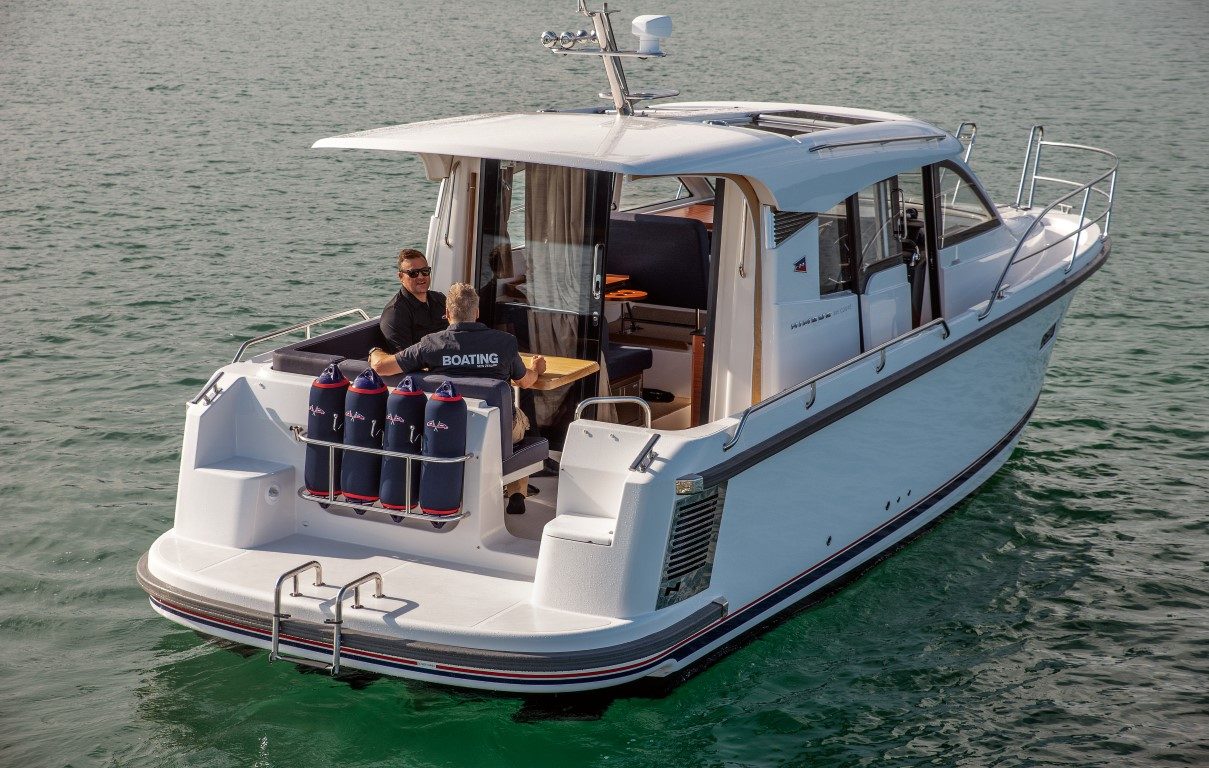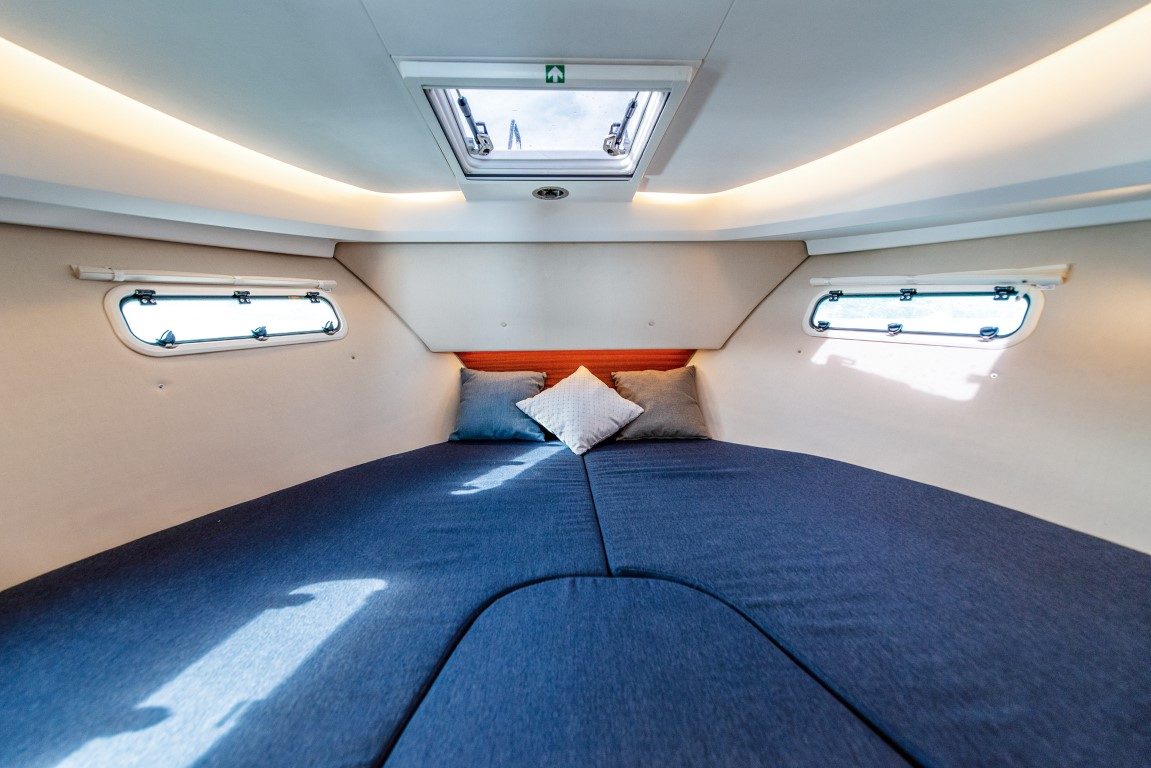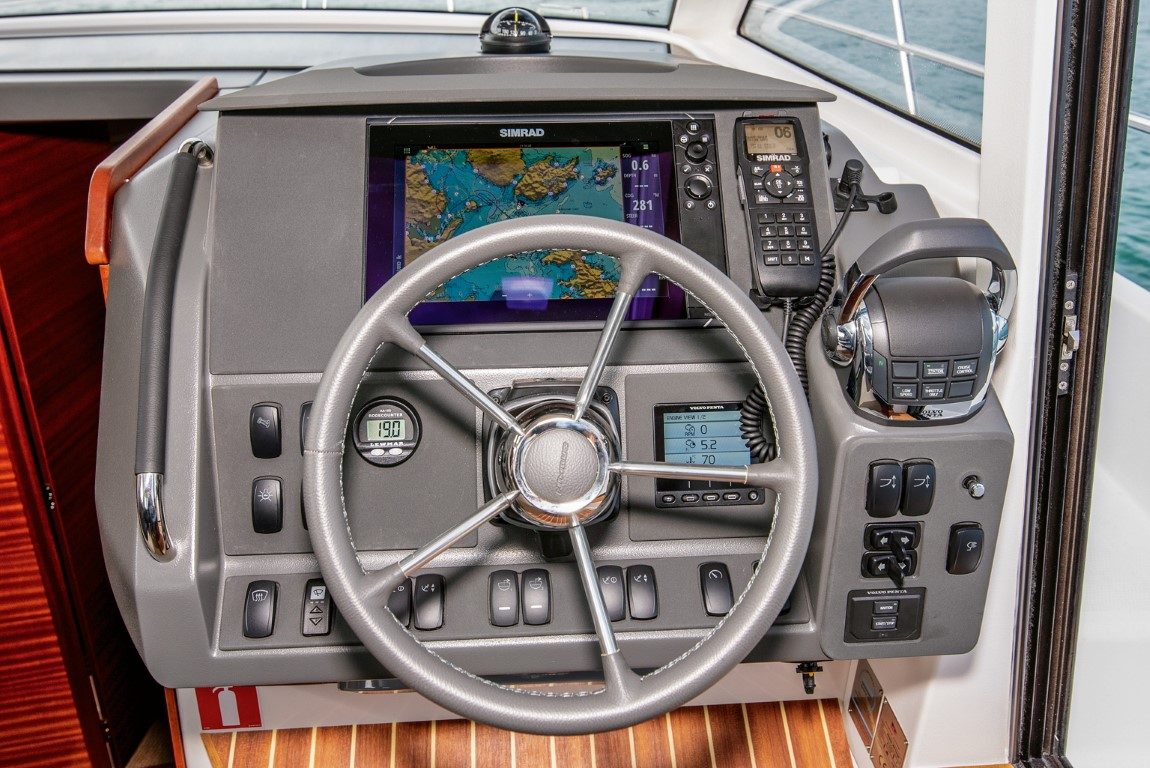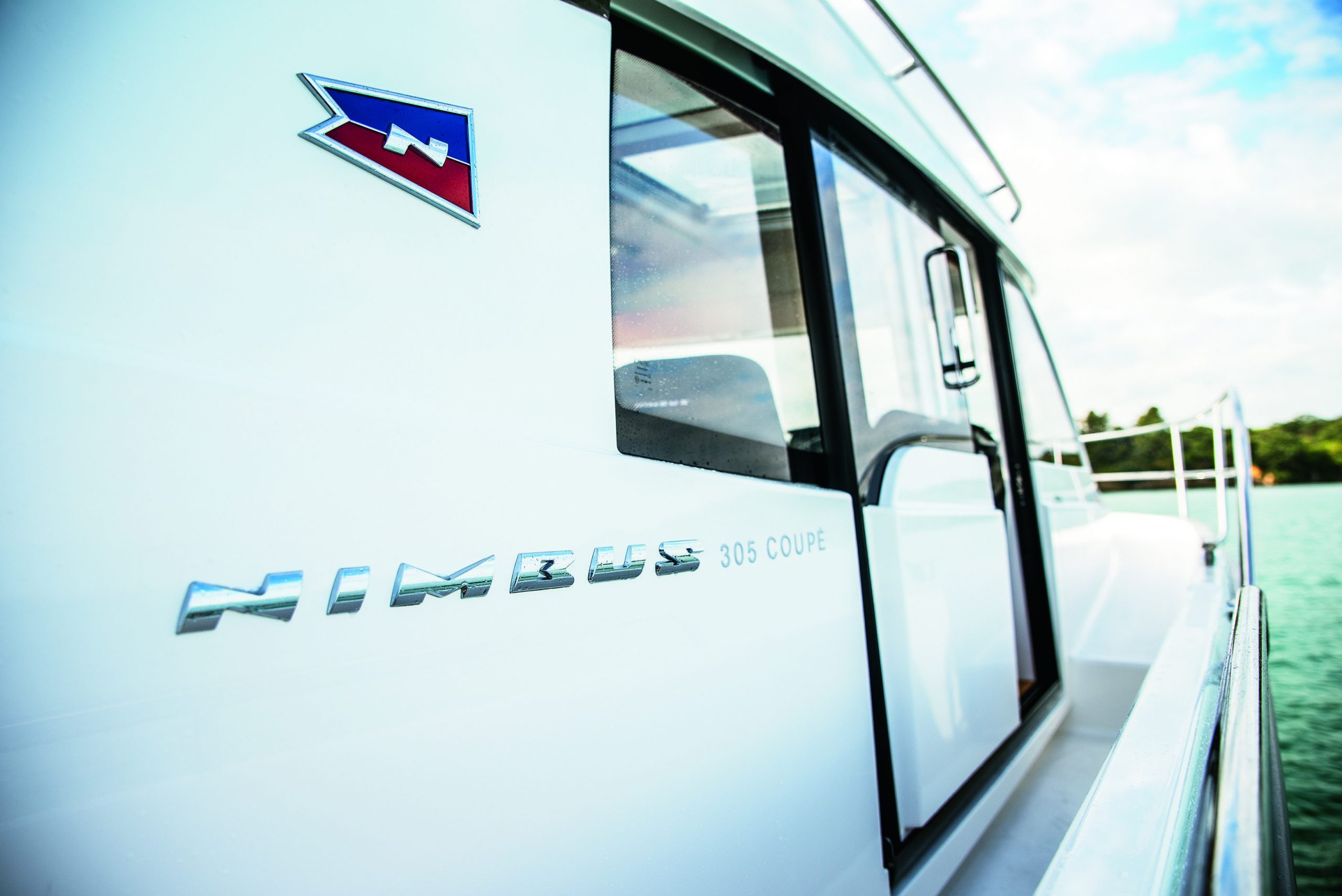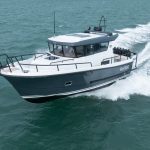‘Behemoth’ is a word which springs to mind or, perhaps more nautically, ‘leviathan’.
- Single engine simplicity
- Bow and stern thrusters standard
- Decent performance and good economy
- Stylish, light-filled living areas
- Well designed inside and out
- V-drive, not sterndrive


